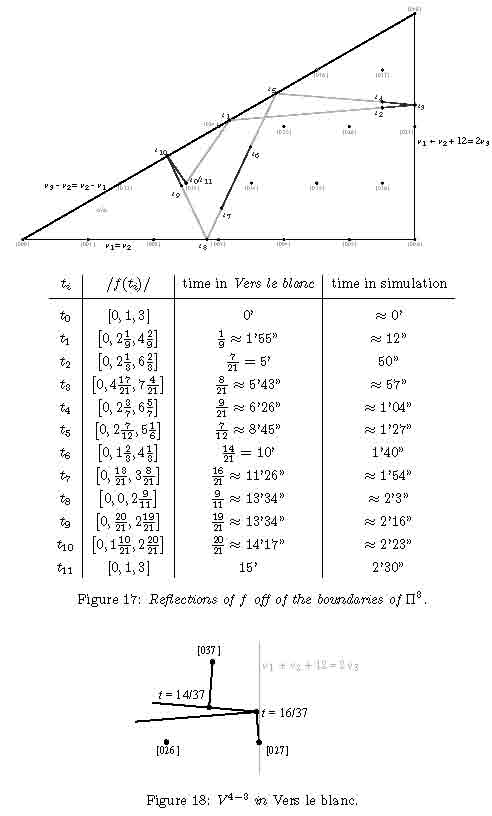|
Continuous harmonic spaces, Journal of Music Theory 51.2, 2007 (published in 2009). Winner of the David Kraehenbuehl Prize.
Recent work by Ian Quinn investigates the harmonic quality of pitch-class sets through the use of the discrete Fourier transform. This paper uses the continuous Fourier transform to extend Quinn's work to continuous pitch and pitch-class sets, demonstrate distance measures in continuous Fourier spaces that correlate strongly with existing interval-based similarity measures such as IcVSIM and ANGLE, and gives a sample of how these continuous spaces can be used to investigate the structural properties underlying the Z-relation (see joint work with Rachel Hall, below). Geometrical music theory, published in Science and the focus of a special session at the 2007 Society for Music Theory Annual Conference. This is a three-way
collaboration with Ian Quinn and Dmitri Tymoczko that, in the process of developing a very general geometric model of voice leading, recasts much of contemporary music theory in terms of a continuous, geometrical approach that contrasts with the discrete, combinatorial approach dominant in the field. The key is to
form mathematical quotient spaces where points correspond to classes of
chords and paths between points correespond to classes of voice leadings. There's also lots of cool pictures, so have a look!
Interaction of the lamento motif and jazz harmonies in György Ligeti's Arc-en-ciel, Intégral 21, 2007. This is an analysis that focuses
on the voice-leading and harmonic constraints underlying many of the
chord progressions in Ligeti's fifth Piano Etude, which the composers
describes as "almost a jazz piece." Ligeti's harmonic approach in
this etude seems less systmatic than many of his other works, but
extending Neo-Riemannian approaches to efficient motions between
tertian harmonies of indefinite size reveals the basic principles at
work.
Judgments of distance between trichords, Proceedings of the 9th International Conference on Music Perception & Cognition (ICMPC9), 2006. Empirical
research with my FSU colleague Nancy
Rogers
that answers some of the questions I pose
in the paper below on voice-leading distance.
Continuous transformations, Music Theory Online10.3, 2004. On the Z-relation problem, presented at the American Mathematical Society 2007 Annual Conference and to be presented at the 2008 Society for Music Theory Annual Conference. This is joint work with Rachel Hall, a mathematician at St. Joseph's University as well as an avid folk musician. Formalized accelerando: An extension of rhythmic techniques in Nancarrow's acceleration canons, Perspectives of New Music 39.1, 2001. Voice-leading parsimony in the music of Alexander Scriabin, Journal of Music Theory 42, 1998. |
